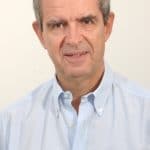Albania, Athleta Christi. At the roots of a people’s freedom.
This exhibition aims at showing how “freedom identifies with dependence on God at a human level, that is, recognized and lived,” as Father Luigi Giussani wrote. Religiosity then becomes the only boundary against the dictatorship of man over man, “the only objection to the slavery of the powers that be.” This was dramatically and tragically lived by one of the most ancient peoples in Europe, the Albanese people, which this year celebrates the centennial anniversary of its independence (1912-2012).
Starting from a brief reflection regarding the curators’ personal experience, the exhibition moves to the greatest historical icons of that people’s identity, describing the conscience with which the protagonists have lived in their times through their different vocations. Then, the exhibition considers the total censorship against religiosity carried out in Europe by communism, and it closes with a judgment about recent events, sharing the thought of the greatest contemporary Albanese thinkers.
The exhibition is a multimedia journey that tells the story of Giorgio Castriota Scanderbeg, the athleta Christi who stopped the Ottoman advance towards Europe. The leader of a great warrior people started an epic that still deeply marks the identity of the Albanese people. Such identity was guarded and transmitted in its purest essence by the clergy and by the religious Catholic orders. Their faithful presence among the Albanese people is quite well summarized in an open letter of 1932 where the Franciscan friars of Scutari reply to the Minister of Education of the kingdom of Albania, after he proposed to limit their freedom to teach: “Mister Hil, how many years, or better how many hours have you taught in your life to the young Albanese at school? […] Where are the books that you wrote, the magazines and newspapers that you decided to create in order to defend the rights of the Albanese people and of Albania? […] Have you ever reconciled revenges, redeemed mortgaged arable properties, plains, houses; or have you ever dried up anyone’s tears? […] You have fought for the homeland. We too had to fight, next to our people, more often than Your Lordship. Actually, we even shed our blood for Albania. While Your Lordship came back home, thanks God, safe and sound!”
The second icon of the exhibition is constituted by the main protagonists of the Albanese Risorgimento which led in 1912 to the country’s independence from the Ottoman Empire: the Franciscans, the Jesuits, and the secular clergy who were the first victims of the most atrocious totalitarian regime of the European history.
Mother Teresa, the great saint of the twentieth century, was born and educated within this people that generated these martyrs. While her powerful humanity witnessed Christ to the world, Albania fell into the darkness of atheism imposed and promoted with capillary ferocity. This atheistic regime crumbled because it clashed against the irreducibility of human nature which can’t be reduced to the product of an ideological plan.
At the beginning of this rebirth the Albanese people found themselves struggling with a feeling of emptiness regarding their identity, the fruit of the collapse of the state atheism: a saying describes this by stating that the faith of the Albanese is to be Albanese. The exhibition intends to be a reply to this persistent lie, a reply based on the heredity of those three great Albanese icons. The ultimate purpose is to offer a starting point for a debate within Albania which regards as highly important the fact that culturally the Albanese are part of the western European culture. At the same time, it is also an attempt to explain to the Western countries that the essence of the history of Albania belongs to them, precisely because of the way it extols freedom.
Curated by A cura di Bardha Karra, Florenc Kola, Zhirajr Mokini Poturljan, Miranda Mulgeci Kola, Teodor Nasi, Denis Spahaj.
With the advice of Felice Eugenio Crema, Giorgio Paolucci.





